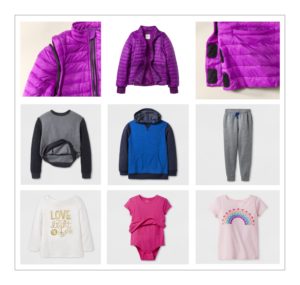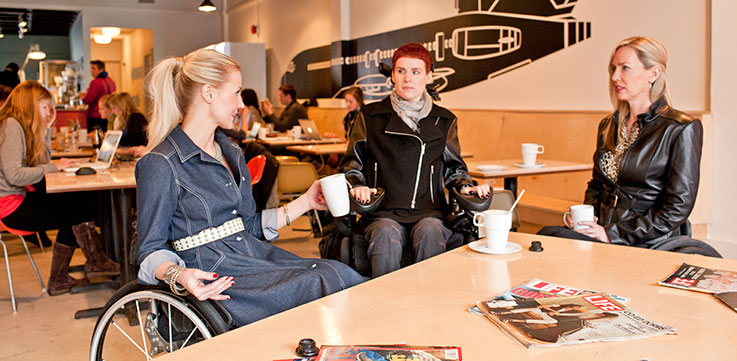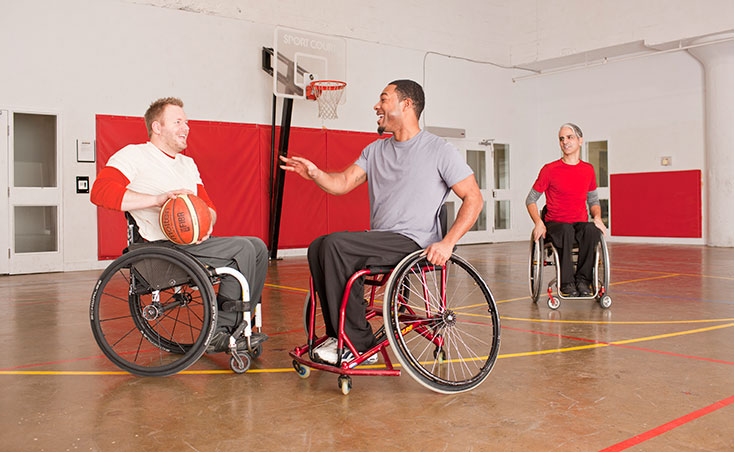By Joan Leotta
 Last summer, Target launched the children’s clothing line, “‘Cat & Jack,” a fun blend of creativity and functionality designed to meet the needs of modern families. This past fall (2017), Target expanded the line to include a selection of stylish adaptive pieces for toddlers and kids living with disabilities.
Last summer, Target launched the children’s clothing line, “‘Cat & Jack,” a fun blend of creativity and functionality designed to meet the needs of modern families. This past fall (2017), Target expanded the line to include a selection of stylish adaptive pieces for toddlers and kids living with disabilities.
In describing this innovative launch, Julie Guggemos, senior vice president of Product Design and Development at Target, stated, “It’s our goal at Target to always make sure we have products that fit our guests’ needs, and all at a reasonable price point. We heard from our guests – and members of our own team—that there’s a need for adaptive clothing for kids that is both fashionable and affordable, so we set out to create exactly that.” She added, “since launching sensory-friendly apparel earlier this year and receiving such positive guest feedback, we’re now focused on continuing to evolve and expand Cat & Jack to meet the needs of even more of our guests.” Target spokesperson Meghan Roman further explained the vision behind the new line of clothing and the role Cat & Jack plays in the company’s overall commitment to shoppers with disabilities.
SMG: What made Target aware of the need for adaptive clothing?
Roman: Target heard from real kids and parents – and members of their own team – that there’s a need for adaptive clothing for kids that is both fashionable and affordable. It all started when Stacey Monsen, a design director for AVA & VIV, Target’s own plus size line brand, and her teammates saw an opportunity to design pieces that are more accommodating for all guests–including their own kids. With this insight, Target set out to introduce a limited selection of sensory-friendly and adaptive kids’ clothing, within Cat & Jack, that’s affordable and offers kids stylish options to feel comfortable and confident enough to take on the day. Since the product launch last year, real kids, including those with sensory processing sensitivities, have played a key role in the development of the Cat & Jack brand. The feedback and insights Target gathered from this unique demographic were so invaluable that we have continued to tap kids from season to season to ensure we are meeting the wants and needs of our guests.
SMG: What items are available now?
Roman: The adaptive assortment features 40 items for boys and girls, including puffer jackets, long-sleeve tees, short-sleeve tees, hooded sweatshirts, leggings and bodysuits. Cat & Jack’s selection of adaptive apparel features details like outerwear created with zip-off sleeves and side and back openings to help make dressing easier for kids who are lying down or sitting. We also offer footless sleepwear to minimize discomfort for children who have sensory processing sensitivities or for those who wear additional supports on their legs and feet; we carry clothing with hidden openings that allow for abdominal access as well as diaper-friendly leggings and bodysuits.
SMG: Are (and were) disability organizations and people with disabilities involved with developing and marketing this line?
Roman: In addition gathering feedback from our guests and members of our own team, Target’s design team met with several organizations such as Pageant of Hope (a pageant for girls with special needs and challenges), Mind Body Solutions (a non-profit specializing in adaptive yoga), The National Federation of the Blind Minnesota and The Minnesota Autism Center, a group which facilitated our understanding of how clothing can help meet the everyday needs of children with disabilities and sensory processing sensitivities.
SMG: Are the clothes available online, in stores or both? What are the sizes and price points?
Roman: The Cat & Jack adaptive apparel assortment is available exclusively on Target.com. Based on the current brand styles, Target’s internal design team created the 40-item assortment with features like side and back snap and zip closures and hidden openings for abdominal access, all in an effort to make getting dressed easier for everyone (kids and parents!). Cat & Jack adaptive apparel comes in sizes 2T-5T (Toddler) and XS-XXL (Big Kids). Prices range from $4.50 to $39.99, with most items priced at under $19.99.
The Target.com website boasts a unique online experience with online sizing tools meant to make it easier to find clothing that fits the specific needs of children. The online experience also showcases the design attributes and provides inspiration of how to mix and match the styles.
SMG: Cat & Jack is available exclusively for children right now. Will adult clothing be available at a later date?
Roman: Yes, the line is only for children at present. Target will continue to evaluate all of our apparel assortments from kids to adults to ensure that guests feel welcomed and inspired by our products.
The best way to summarize our plans for the future of Cat & Jack is to quote Stacey Monsen, the Target design person who initiated our involvement in this line: “The Target team has immense passion and collective knowledge, and I love that we’re using it to develop products and solutions that will change people’s lives. My goal is to keep being an advocate, for my daughter and for others.”
Cat & Jack products are available now on Target.com.
 The word “fashion” often conjures up images of runways and of models with perfect bodies. Izzy Camillieri, owner and designer of
The word “fashion” often conjures up images of runways and of models with perfect bodies. Izzy Camillieri, owner and designer of 
